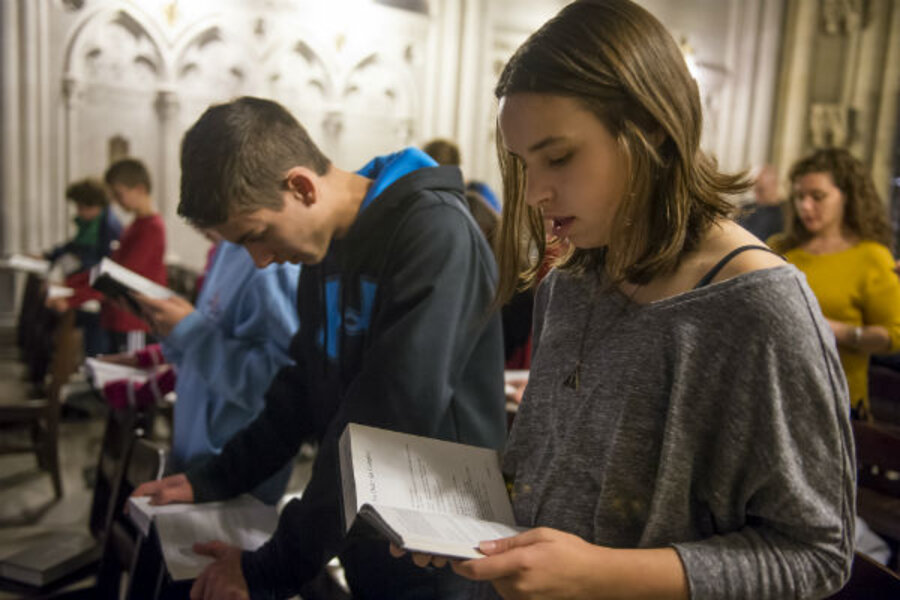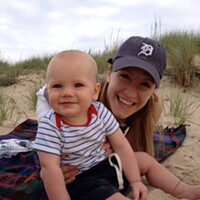Interfaith marriage: The tale of 'Form B'
Loading...
As the story goes, when my parents were still teens, they started dating, fell in love, and decided to one day get married. That “one day” became sooner than expected when my mother found out she was expecting a baby.
Through the surprise and related concerns, my parents remained dedicated to each other and their goal of marriage and forged on, albeit ahead of schedule, toward their nuptials.
My mother was raised a devout Catholic, and my grandparents insisted that she be married in the Catholic Church. Honoring their wishes, my parents took steps to be married by the priest at St. Hugo’s, my mother’s parish church.
Father Esper, the elderly pastor of mom’s church, guided my parents through premarital counseling, which included the required reading of Anthony Wilhelm’s book “Christ Among Us” and they talked about values of family, raising children, and how to remain faithful to each other and to God.
My Catholic mother and my father, a Christian Scientist, proved worthy of partnership and they completed their counseling in time for a June wedding before my brother’s November arrival.
At the end, Father Esper presented my father with a form to sign, which served as proof of completion of counseling and fulfilled the final step before earning permission to marry in the Catholic Church.
In its essence, the form was an agreement that my father would raise his children to be Catholic.
After carefully reviewing the document, my father told Father Esper that he couldn’t sign it.
Over the course of counseling, Father Esper and my father built a mutual respect for each other – my father felt he could be pretty direct, with all due respect, with the elder priest.
He explained that he could not sign the form in good conscience, since he didn’t know in which specific denomination his children would be raised, only that they would be raised in a Christian home.
My father has told this story throughout the years, from the time my two older brothers and I attended Sunday School (we ended up being raised attending a Christian Science church), until now, as we all have been married and started families of our own.
Today, my oldest brother is married to a Jewish woman, and their daughter is learning the best of both Christian and Jewish faith traditions. My second-oldest brother, who often considers a good surf as sacred as a good sermon, married a Presbyterian, and they are raising their kids in that denomination.
I seem to be the odd one out in the family, having married someone within the same denomination as I was raised, and he is currently serving as a protestant chaplain in the US Navy.
According to this week’s cover story in The Christian Science Monitor on interfaith marriage, my brothers and my parents represent a growing trend, as the number of interfaith marriages in the United States has risen from 20 percent in the 1960s to 40 percent today.
The article points out that interfaith marriages, once considered taboo in many circles, continue to grow in number and acceptance, as couples stay rooted in their faith traditions while incorporating those of a spouse.
According to the cover story, scholars say the phenomenon of not feeling compelled to adopt a spouse’s faith largely coincides with American views of religion as an individual choice, instead of being something that you are born into, which is part of your being, as it is seen in many other parts of the world.
Along with the increase of interfaith marriages across the US is the number of programs supporting families that wish to raise kids with an appreciation and understanding of different religions. According to the cover story, groups like the Interfaith Families Project, outside of Washington, host weekly gatherings for hundreds of individuals, including dozens of families, that include hymns, readings, and prayers pulled from multiple faith traditions.
Backing up to 1974, the options for how to raise kids to appreciate two faiths was not as clear cut.
According to my father, upon hearing his objections, Father Esper paused to absorb my dad’s comments. A few moments later, he nodded to his secretary, who opened up the drawer and pulled out the document that will forever be referred to as “Form B.”
“Form B” stated that my mother and father would raise their children in a Christian home. My father signed the document and less than a month later my parents were married at St. Hugo’s.
As my father has told this story through the years, many of his peers have marveled that there was a second option. Some others who have heard the story have complained that they never thought to ask, they simply signed the form.
The bigger point to my father’s story is not that there was a second form, but rather that he was willing to ask questions, not only of his own faith and my mother’s, but of the constructs of faith within relationships and family. He and my mother admittedly did not have all the answers, but they felt strong enough in their faiths that the right answers would be provided in due time for them and their family.
My parents would go on to raise me and my brothers in a household that regularly attended church and Sunday School, and pulled from their own understanding of their faiths to help teach us lessons about honesty, caring for others, and working for positive change in the world.
And now on any given weekend, you will find my immediate family members remaining faithful at a mass, a church service, or a Shabbat service.








